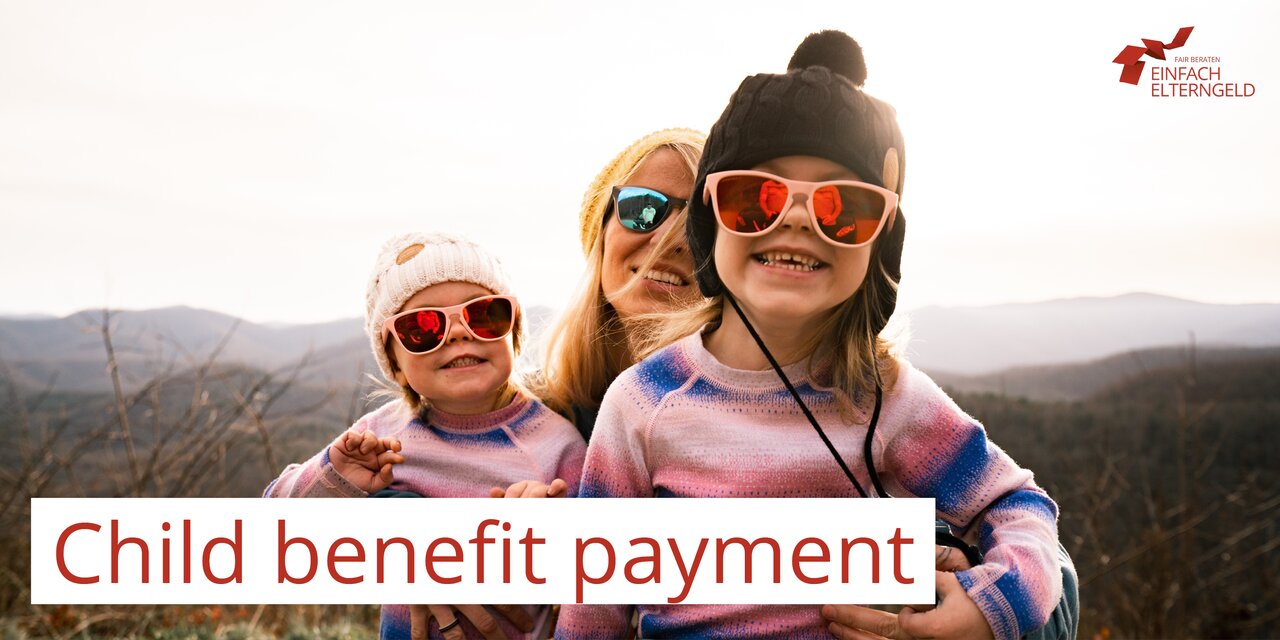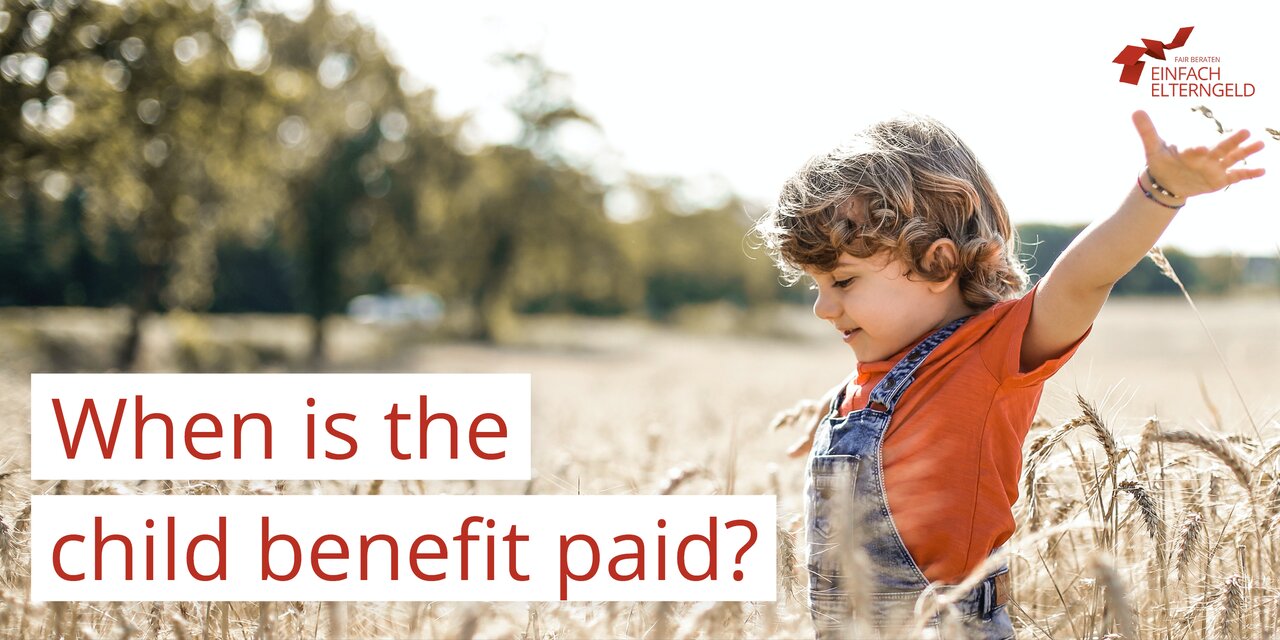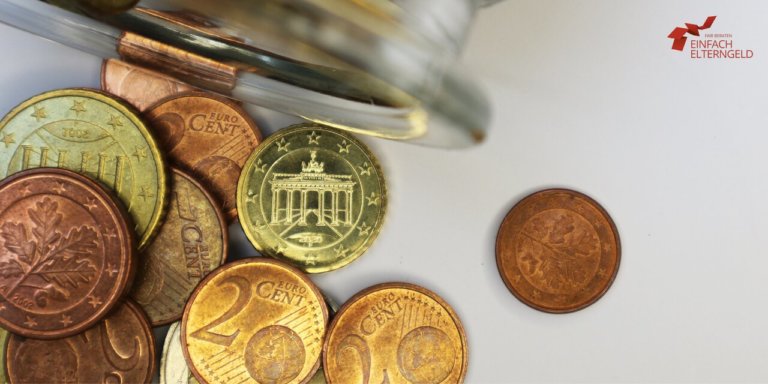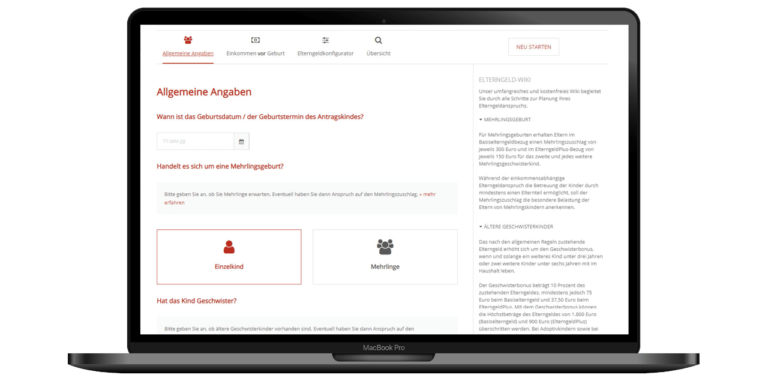Child benefit payment 2026

On this page we inform you about how and by whom child benefit is paid. You will also find information on who child benefit is paid to, the dates on which they are paid, and the importance of the child benefit bonus (Kinderzuschlag) for your family. In addition to the special forms of child benefit payment, we also introduce you to the topic of “child benefit departments (Familienkassen)” and provide tips on your child benefit applications.
Contents
The most important facts at a glance
- Child benefit is paid by the child benefit departments (Familienkassen)
- The persons entitled to child benefit are the parents, other persons or authorities who are responsible for the maintenance of the child
- In the case of minor children, child benefit may be paid to a legal representative
- Children of full age can receive child benefit themselves if they run their own household and take care of themselves
- The specified payment dates apply to the payment (allocation is always based on the child benefit number/final digit)
From whom is the child benefit paid?
Child benefit is paid by the child benefit departments (Familienkassen) of the Federal Employment Agency. Which child benefit department is responsible for your family depends on where you live. Here you can find out more about the responsibility of the child benefit departments.
How is child benefit paid?
If the child benefit department has decided that your child is entitled to child benefit, child benefit will be paid monthly to a person entitled to child benefit. For the date of payment the Child Benefit Number, in particular the final digit, is decisive. The child benefit is transferred non-cash to the account that the child benefit claimant specified when applying. Proportionate amounts cannot be transferred to several accounts.
To whom and where is the child benefit paid?
Child benefit is always paid to only one entitled person (child benefit beneficiary) who provides for the maintenance of the child. If there are several entitled persons, legal rules must be observed. If the child’s parents do not provide for the child’s support or do not provide enough, child benefit can also be transferred to another person or agency (such as the Youth Welfare Office), which will provide for the child’s support instead. This process is called “diversion.” Child benefits may also be paid to the child himself or herself if the child is self-supporting. For minor children, a legal representative is required in these cases. As a legal basis, the Income Tax Act (EStG) and the Federal Child Benefit Act (BKGG) must be observed. You can find detailed information on the requirements and regulations for child benefit in the article Apply for child benefit.
Child benefit payment to father or mother
If both parents of the child are entitled to child benefit because the child lives in a shared household with them, a “beneficiary designation” (“Berechtigtenbestimmung”) can be used to determine to which parent the child benefit should be paid. In doing so, the parents can declare among themselves the person entitled to child benefit for whom there is a higher claim to child benefit.
Payment of child benefit for separated parents
Even if the parents are separated, child benefit is always paid to only one person entitled to child benefit. As a rule, this is the parent who has taken the child into his or her household and provides for its maintenance. If the child stays in both households alternately, the determination of the beneficiary can also determine the beneficiary of the parents in this case. A beneficiary determination between natural and non-born parents is also possible if the child lives in a shared household with the mother and stepfather (civil partner) or father and stepmother (civil partner). If the child does not live with either parent, the parent who pays the higher child support receives the child benefit.
In what cases does the child benefit payment go to the child?
Child benefit can be paid to the child itself if the persons entitled to child benefit do not pay for its maintenance and the child has to provide for itself. In this case, an “application for payment of child benefit to the applicant, other persons or authorities” (“Abzweigungsantrag”) must be submitted to the responsible child benefit department. This is also possible if the child benefit and the child support actually paid differ greatly. Accordingly, the person entitled to child benefit pays less support than he or she receives child benefit for the child. If minor children are to receive child benefit themselves, a legal representative must be appointed.
Child benefit payment at the age of majority
The basic prerequisite for direct payment of child benefit to the adult child is that the child runs his or her own household, does not receive support from parents, and is self-supporting.
Payment of child benefit to another person or authority
The child benefit department can also transfer the child benefit directly to other persons or an authority (e.g. youth welfare office, social welfare office) if the parents or persons entitled to child benefit do not pay for the child’s maintenance. In this case, the persons or authorities used are obligated to pay for the child’s support. Before this so-called “application for payment of child benefit to other persons or authorities” (“Abzweigung”) takes place, the child benefit department gives the entitled persons the opportunity to comment on the situation. If authorities have already granted social benefits to the entitled person or the child and the child benefit was not taken into account in the process, the child benefit can be claimed retroactively or in the future by the authorities.
Protection of child benefit on the P account (garnishment)
Child benefit can be protected from garnishment by means of account garnishment protection on a debtor’s account. For this, the debtor must provide proof of incoming social benefits on his account. This can enable the greatest possible protection. At the request of the person entitled to child benefit, the child benefit department will issue receipts for child benefit payments, which can be presented to financial institutions in case of doubt.
Are child benefits paid in advance or retroactively?
Child benefit is paid on a monthly basis. The final digit of the child benefit number indicates whether you receive child benefit at the beginning or at the end of the month. Retroactive payment of child benefit is only possible for the last 6 calendar months before the child benefit application is received by the child benefit department.
Payment dates: When is child benefit paid?

For the payment of child benefit there are fixed Child benefit payment dates. Here you can also find a child benefit transfer schedule to download as a PDF in different versions and formats.
Special forms of child benefit payment
In the case of public sector employees and civil servants, payment may be made by the employer’s salary office together with the wage/salary/salary for the month in question. With the child benefit department reform, employers were given the option of transferring payment to the child benefit departments of the Federal Employment Agency. In the event of such a switch, this will result in a change in the payment dates of child benefits to public sector employees in accordance with the above tables.
Responsibility child benefit department for applications and payments
Here you can find an overview of the child benefit departments of all federal states.
- Child benefit department Baden-Württemberg
- Child benefit department Bavaria
- Child benefit department Berlin
- Child benefit department Brandenburg
- Child benefit department Bremen
- Child benefit department Hamburg
- Child benefit department Hessen
- Child benefit department Mecklenburg-Vorpommern
- Child benefit department Lower Saxony
- Child benefit department North Rhine-Westphalia
- Child benefit department Rhineland-Palatinate
- Child benefit department Saarland
- Child benefit department Saxony
- Child benefit department Saxony-Anhalt
- Child benefit department Schleswig-Holstein
- Child benefit department Thuringia
FAQ
-
Who pays the child benefit?
-
Where is child benefit paid?
-
To whom is the child benefit paid?
You might also be interested in:


